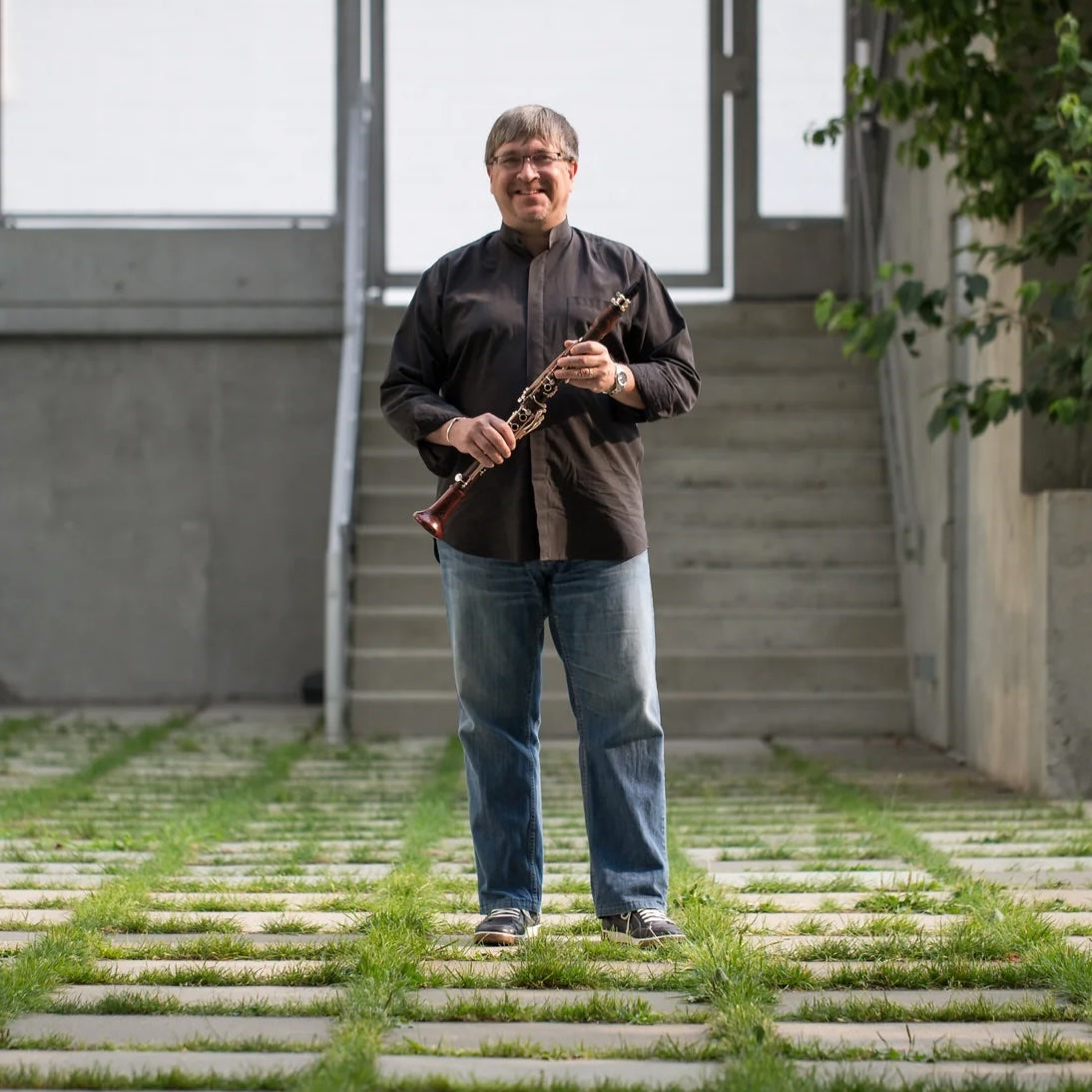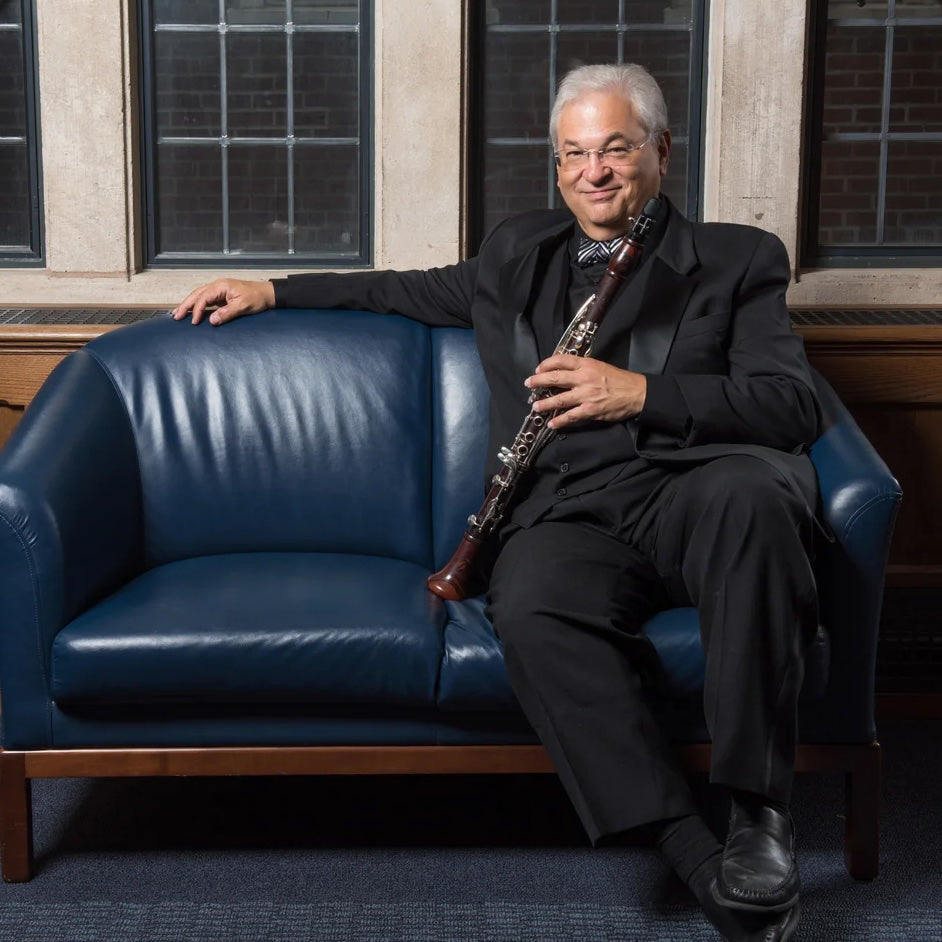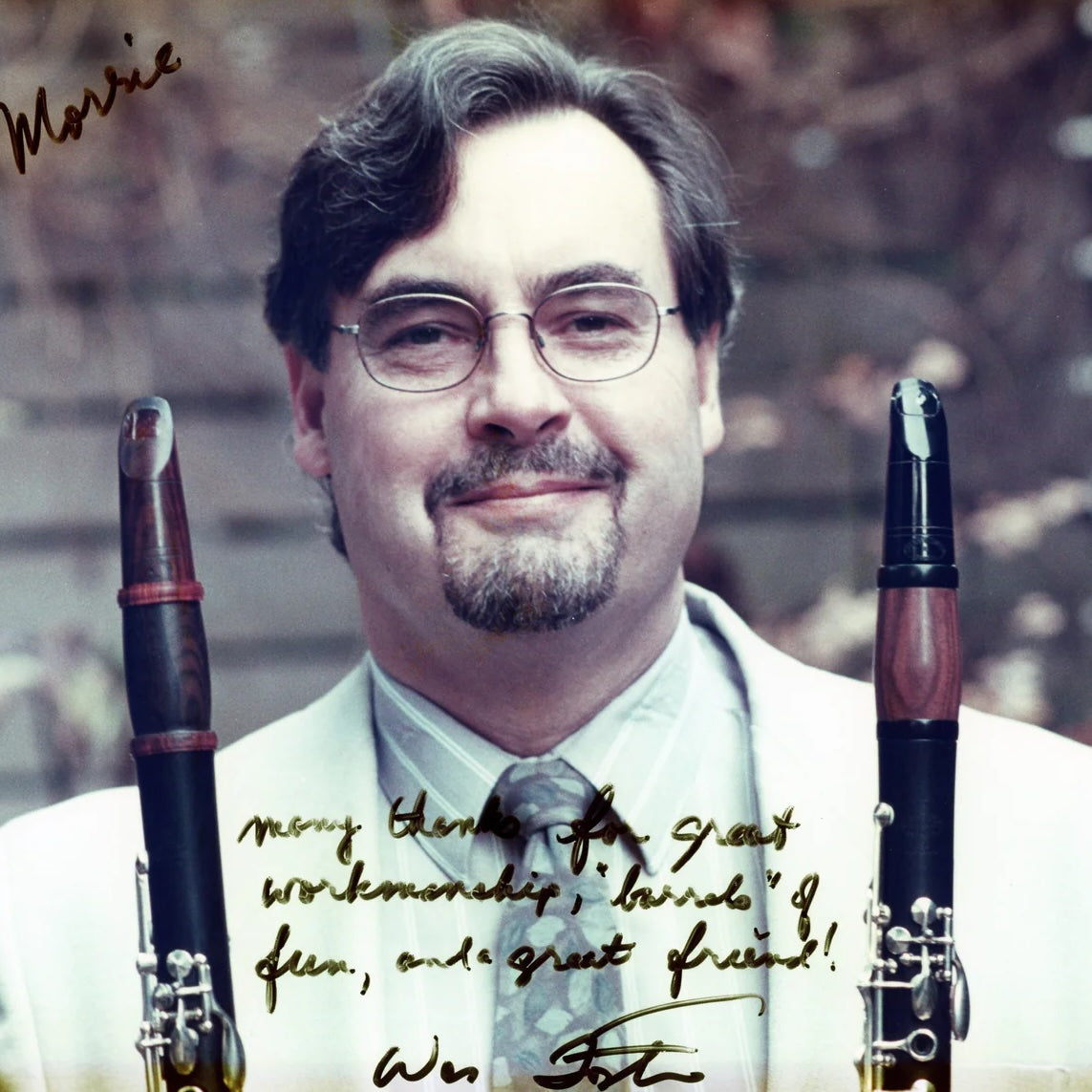An efficient warm-up routine is one of the most overlooked components of regular practice. Professional athletes consider a thorough warm-up essential for peak performance, as do professional dancers, and clarinetists would be well advised to follow their examples. The muscles that we use to play the clarinet greatly bene t from a thoughtfully conceived and consistently practiced warm-up routine.
Clarithenics provides an efficient and comprehensive warm-up that takes about fifty minutes to complete and focuses on three fundamental areas:
- Long tones
- Repetitive tonguing exercises
- Full-range scales/broken-chord arpeggios/ scales in thirds (my definition of “full range” is low E through altissimo F♯ or G, depending on the key)
Long Tones for Joan’s Bones
Okay, the title’s a bit unconventional — it’s a tongue-in-cheek tip o’ the hat
to two great musicians: Joan Sutherland and Chick Corea. Dame Sutherland incorporated a similar long-tone format into her disciplined warm-up and I couldn’t resist expanding the title by borrowing from one of my favourite jazz tunes, Chick Corea’s “Tones for Joan’s Bones.”
Long tones are the most important part of the Clarithenics routine. In addition to strengthening the muscles of the embouchure and diaphragm, these exercises can be used as a kind of breathing meditation. Yoga and some martial art disciplines consider breathing to be the foundation stone of their didactics. The long-tone exercise and variations outlined below allow for detailed observation of several essential fundamentals. Furthermore, most great performing artists that I’ve talked with over my career emphasize the signi cant importance of slow practice. Fundamentals that can be focused on at a very slow tempo:
- Relaxed, full in ation of lung capacity
- Efficient exhalation of air with a “supported” airstream
- Oral cavity and embouchure con guration
- Correct and relaxed hand and body positions
- Intervallic pitch relationships
Practice in front of a mirror while standing (use a neck strap if you experience any pain in your hands or forearms). A mirror enables you to see what is really going on with your abdomen, embouchure, throat area, and hand position. I’ve stayed away from attempting to describe correct hand position on purpose; people’s hands are different shapes and sizes. You should structure your hand positions to allow the greatest ef ciency of nger movement with the least amount of physical effort. Thumb position is critical for the right hand. The exercises in Jeanjean’s Vade-Mecum are wonderful tools to help you establish ef cient, beautifully structured hand positions.
The goal is to create the most challenging performance environment in your practice space. The long-tone exercise allows for focused analysis of tonal consistency and linearity between registers. Strive to produce “sound ligaments” that mellifluously connect all intervals and registers of the clarinet. Remember to use a tuner.
Start by using the metronome to determine how slowly you can play a one- octave scale, in whole notes, in one breath. Begin on low E as illustrated in the musical example below. After completing the E major scale up and down, continue ascending in half steps (as shown in examples below). The last long-tone scale will begin on G immediately above the staff. This exercise at 92 to the quarter note takes about thirty-five minutes.

While ascending, lightly legato tongue each change of whole note. At the end of the octave, rest for eight beats, and then descend in the same fashion. You can choose major, minor, or any linear eight-note creation you come up with. My advice is to make it simple to start. After you descend, wait again for eight counts, move up a half step, and ascend on a scale that starts on F.

Continue this pattern until you reach altissimo G.

Find a tempo that makes it difficult to finish the octave comfortably. It’s beneficial to barely make it through the final whole note. Don’t allow the exercise to be easy. The idea is to improve the capacity of your inhalation and the efficiency of your exhalation:
- Observe correct breathing mechanics.
- Observe correct hand position.
- Observe correct formation of your embouchure (see “Seduction of the Ear” in a forthcoming issue for more on this).
- “Hear” your sound. It’s imperative and essential that you have in your “mind’s ear” a concept of your ideal sound: an aural North Star that you can sonically navigate to at all times while playing.
Long-Tone Variations
After five or six round-trip octave scales, it’s time to implement variations that allow you to re ne additional fundamentals while preserving the positive attributes of slow practice. Don’t get complicated with dynamic variations until you are comfortable with the basic format. Use your tuner. The examples below are just a template. Apply variations to all long-tone scales.
Example 1: Start subito forte on the first whole note, subito piano on the second, and so forth.
Example 2: Start forte and gradually diminuendo to piano on the ascent and reverse on the descent.
Example 3: Start piano and crescendo to forte on the ascension and reverse on the descent. (This and the previous variation are especially helpful in controlling the upper register.)
An exercise to help you determine an efficient amount of tongue movement: Take the reed off of the mouthpiece and put it in your mouth as if it were still on the mouthpiece. Stand in front of a mirror and with correct embouchure configuration, articulate the reed as lightly as possible, while closely observing the movement of the reed. Strive for consistency and efficiency of tongue motion and reed movement. Observe the physical sensations of your tongue movements. Put the reed back on the mouthpiece and duplicate these movements.
On the descent, use half-note values and follow the example below again using legato articulation.

Repetetetetetive Tonguing
The next exercise focuses specifically on the movement of the tongue. The intent is to enable you to isolate and observe tongue motion involved with articulation without the distractions of finger movement.
Similar to the long-tone exercise, a majority of the range of the clarinet will be utilized. One note represents one exercise. Opposite of the long-tone exercise, this exercise requires you to select the fastest tempo that challenges you to complete 41⁄4 measures of sixteenth-note values in 4/4 time.
Play the measures at the fastest tempo possible. It’s okay if the articulations become fractured at the very end. Again, it’s important to push yourself; strive for efficiency and consistency of tongue motion.

Rest briefly between each note (separated by the “railroad tracks”), evaluate your previous effort, and then set properly for the next note/exercise. Focus on using the least amount of tongue motion to attain a consistent, re ned articulation while paying specific attention to the interface of your tongue and reed. Don’t forget to use a metronome.
Putting It All Together
Now pick a scale (for example, I’ll use C major), and keep in mind the rule for these full-range exercises. Using the tempo of your repetitive-tonguing exercise, start with C major, eighth note values, legato tongued as initially illustrated below.
You can see that I’ve included two articulation options: all slurred and all legato. In addition, there are three rhythmic variations: eighth notes, triplets, and sixteenth notes.
The reason for emphasizing the legato articulation versus staccato is that the legato articulation requires more refinement from the motion of the tongue muscle. By nature, this requires the tongue to be closer to the reed at all times. So always think legato even when articulating rapidly.
Start with C major one day and then the next day A minor. On the third day, go to six o’clock on the circle of fifths, G♭ major. Then the next day, E♭ minor.
Make sure that you are bouncing around the circle of fifths: C, Am, G♭, E♭m, F, Dm, B, G♯m, etc. The idea is to do intensive work on one scale each day so that roughly every month, you will work through all twenty-four major and minor keys.
Bil Jackson enjoys a varied musical career that includes solo, orchestral, and chamber music appearances. Before joining the faculty at the Blair School at Vanderbilt University, he served as Principal Clarinet with the Pittsburgh Symphony Orchestra, Colorado Symphony Orchestra, and Honolulu Symphony, and as Guest Principal Clarinet with the St. Louis and Cincinnati symphony orchestras. Jackson is currently on the summer Artist-Faculty of the Aspen Music Festival and Colorado College Music Festival. He is the only person to win the International Clarinet Competition twice and was a finalist in the Prague International Clarinet Competition. Bil Jackson is a Backun Artist and performs on MoBa clarinets and mouthpieces.



